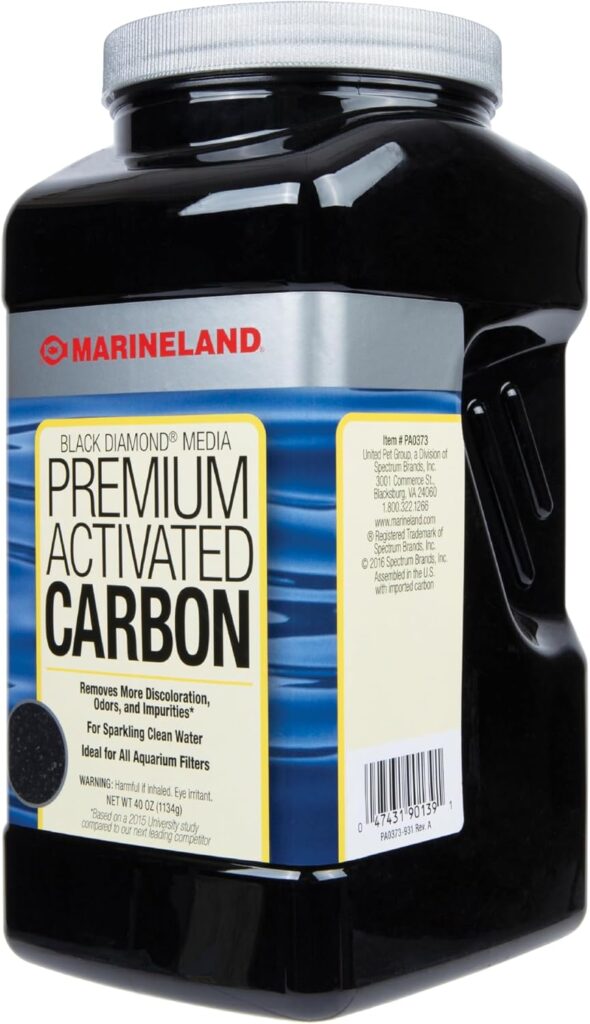
Why Your Aquarium Smells Like a Swamp (And How to Fix It)
Picture this: You walk into your living room expecting to admire your beautiful underwater world, but instead you’re hit with an aroma that could knock a buzzard off a garbage truck. Yeah, we’ve all been there. Your aquarium isn’t supposed to smell like last week’s tuna sandwich, so what gives?
Don’t panic – a stinky fish tank is more common than you’d think, and it’s usually screaming at you about something fixable. Let’s figure out why your aquatic paradise turned into an olfactory nightmare and get it back to being the centerpiece you’re proud to show off.
Aquarium Smell – Why and How To Fix It (Quick & Slow Way)
The Usual Suspects: What’s Making Your Tank Reek?
1. You’re Playing Fish Santa (AKA Overfeeding)
Here’s the brutal truth: You’re probably killing your fish with kindness. Most of us treat feeding time like Christmas morning, sprinkling food like we’re blessing the waters. But here’s what really happens – uneaten food becomes fish tank compost, rotting away and turning your crystal-clear water into eau de garbage disposal.
Fish have stomachs about the size of their eyeball. Let that sink in next time you’re dumping half the container in there.
The Fix: Feed only what your fish can demolish in 2-3 minutes. If there’s still food floating around after that, you overdid it. An automatic feeder like the Ycozy Everyday Fish Feeder can save you from your generous impulses by dispensing measured portions on schedule
2. You’ve Gone Full Procrastination Mode on Tank Maintenance
Look, I get it. Life happens. But your aquarium doesn’t care that you had a rough week – it’s been marinating in its own filth while you binge-watched Netflix. Waste builds up, algae throws a party, and before you know it, your tank smells like a pond behind a sewage treatment plant.
The Reality Check: Regular maintenance isn’t optional – it’s life support for your fish. The Python No Spill Clean and Fill System makes this job so easy, you’ll run out of excuses for skipping it.
3. Your Filter Has Given Up on Life
Your filter is basically the liver of your aquarium – when it stops working properly, toxins pile up faster than dirty dishes in a college dorm. A clogged or dying filter can’t process fish waste, leading to ammonia buildup that smells like… well, concentrated fish pee.
The Upgrade: Sometimes you need to admit your current filter isn’t cutting it. The Fluval FX4 High-Performance Canister Filter is like upgrading from a golf cart to a sports car – your water quality will thank you.
4. Your Tank Has Become Fish Manhattan
Too many fish in too little space equals too much waste for your system to handle. It’s like stuffing twenty people in a studio apartment with one bathroom – things get smelly fast.
The Math: The classic rule is one inch of fish per gallon of water. Yeah, it sounds conservative, but your nose will appreciate the breathing room.
5. Your Plants Have Joined the Dark Side
Live plants are fantastic until they start their death spiral. Rotting vegetation releases the same funky smell as that forgotten salad in your fridge, except it’s contaminating your entire aquarium.
The Green Thumb Solution: Stay on top of plant maintenance. Trim dead stuff religiously and consider Seachem Flourish Comprehensive Supplement to keep your underwater garden thriving instead of dying.
6. The Grim Discovery
Sometimes a fish passes away and plays the ultimate game of hide-and-seek behind decorations or plants. One small dead fish can turn your entire tank into a crime scene that your nose will never forget.
The Head Count: Make it a habit to do daily roll calls. A good aquarium net like the Penn-Plax Quick Net makes the unfortunate retrieval process much less traumatic.
Emergency Room for Stinky Tanks: The Fix-It Protocol
When your tank has gone full swamp mode, here’s your step-by-step intervention:
Step 1: Dilute the Disaster Change 25-50% of the water immediately. This isn’t a gentle suggestion – it’s aquatic CPR. Use API Stress Coat Water Conditioner to neutralize chlorine in tap water, because adding city water chemicals to your existing problems would be like putting out a fire with gasoline.
Step 2: Vacuum Like Your Life Depends on It Get every speck of debris out of that gravel. The substrate is where most of the nasty stuff hides, decomposing into eau de rotten egg. That Python system I mentioned earlier will make this job actually bearable.
Step 3: Give Your Filter Some TLC Check if your filter media looks like it survived a mud wrestling match. Clean it in old tank water (never tap water – you’ll kill the good bacteria). If it’s beyond salvation, replace it with fresh Fluval Foam Filter Pads.
Step 4: Declare War on Algae Scrub those tank walls like you’re prepping for a military inspection. The Aqueon Algae Cleaning Magnet makes this job surprisingly satisfying – like having a tiny squeegee for your underwater world.
Step 5: Deploy the Secret Weapon Activated carbon is like Febreze for fish tanks, except it actually works. Marineland Black Diamond Activated Carbon will absorb odors and impurities like a molecular sponge.
Preventing Future Aquatic Disasters
Master the Art of Consistency Weekly water changes aren’t suggestions – they’re relationship maintenance between you and your fish. Skip them, and you’ll be back to Stinkville faster than you can say “ammonia spike.”
Embrace Your Inner Drill Sergeant Be ruthless about feeding. Your fish won’t starve if you skip a meal, but they might die if you don’t skip the overfeeding.
Become a Water Quality Detective The API Freshwater Master Test Kit is like having a crystal ball for your tank’s health. Test regularly and catch problems before your nose does.
Recruit Bacterial Backup Beneficial bacteria are the unsung heroes of aquarium maintenance. Seachem Stability helps establish the microscopic cleanup crew that keeps your tank balanced and odor-free.
Crystal Clear Aquarium Water – Top 3 Tips (Simple)
The Bottom Line
A smelly aquarium is basically your fish tank’s way of sending up smoke signals. It’s crying for help, not trying to ruin your day. The good news? Most odor problems are completely fixable with a little attention and the right tools.
Your fish deserve better than living in their own toilet, and you deserve better than explaining to guests why your living room smells like low tide. With consistent maintenance and quality equipment, you can have an aquarium that’s actually a conversation starter instead of a conversation killer.
Ready to transform your swamp back into an aquatic paradise? Start with the basics – proper feeding, regular cleaning, and decent equipment. Your nose (and your fish) will thank you.
Want more aquarium tips that don’t sugarcoat the reality of fishkeeping? Subscribe for honest advice that actually keeps your fish alive and your tank smelling like… well, nothing at all.
